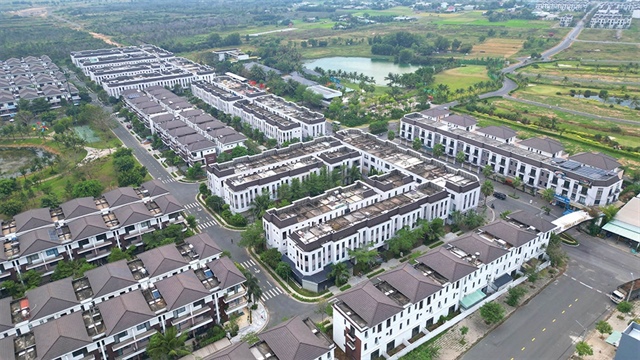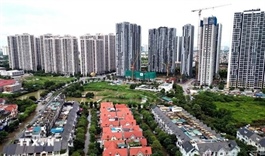Land list produces concern over escalation in prices
Land list produces concern over escalation in prices
The application of the land price list adjusted according to the 2024 Land Law has uncovered issues that need to be resolved after just three months of implementation.

There is still discrimination between natural residential land and commercial and service land, photo Le Toan |
According to preliminary statistics, currently about 25 localities across the country have issued adjusted land price lists for use until the end of this year. However, in many localities, the adjusted list has created a large public reaction when there is a sudden increase compared to the old land price list.
For example, Ho Chi Minh City’s adjusted land price list took effect from November 2024, increasing prices in some spots by as much as 38 times, with the highest level at VND687 million ($28,600) per square metre.
In Hanoi, the land price in the list increased by 2-6 times compared to the old one. Of which, the highest price is $28,900 per sq.m.
Bac Giang province’s adjusted land price list also recorded the highest level of $5,000 per sq.m, an increase of about 2.4 times compared to the old price list.
At a seminar on the situation held in Hanoi by the Vietnam Real Estate Association last week, Nguyen Quoc Hiep, chairman of the Vietnam Construction Contractors Association, said that although new laws put into force in August last year have created a clearer legal corridor for businesses in real estate, there are still some issues, one of which is land valuation.
“We have a project which was granted land handover decisions nine months ago. Up to now, however, the land price has not yet been determined. However, nine months is not that uncommon as there are projects from other businesses that have not evaluated the land price for two years. This is causing a lot of frustration,” Hiep said.
Real estate competitiveness will be loosened if land prices rise skyrocket, he added. “In the current method of calculating land prices, we have not considered the benefits of businesses in general, businesses using land leases, or real estate businesses. All businesses are affected when land prices increase. So which business dares go forward with a project?” Hiep asked.
He then proposed that the Ministry of Natural Resources and Environment have more specific guidance for localities in determining land prices, especially how to calculate prices based on the surplus method.
According to Vu Lan Anh, deputy general director of CEO Group, there is still great discrimination between “natural” residential land and commercial and service land, and regulations on land prices for commercial and service land still have many limitations and inadequacies that need to be improved.
“In fact, currently, localities often collect one-time land rental fees for commercial service land used for projects (70 per cent of the residential land use fee). The high price of commercial and service land will lead to high real estate prices, discouraging investors from investing in tourism and resort projects on commercial and service land,” Anh said.
Anh suggested that, when determining the price of commercial land and services in the land price list, localities need to determine and calculate scientifically according to market principles and harmonise the benefits among different sectors. Based on this, the price of commercial and service land should be 20-40 per cent compared to the price of residential land.
From the state management side, Le Van Binh, deputy director of the Land Department under the Ministry of Natural Resources and Environment, said that the current price list was very different from previous lists.
“The Land Law 2024 stipulates that the People’s Committee is responsible for submitting the land price list, while the People’s Council is responsible for giving the final decision. This indicates that regulations are increasingly professionalised and responsible,” Binh said.
Binh added that in the past, local land prices were controlled by the government’s land price framework. But now, the Land Law 2024 removes the land price framework and gives the initiative to localities to issue land price lists.
“So far, we do not have enough evidence to say that the 2024 Land Law is a failure. A legal policy’s impact on life cannot be measured in some months. The new law has only been in effect for six months. Many localities even are still training the new policies for grassroots levels, and we need more time,” Binh added.
























